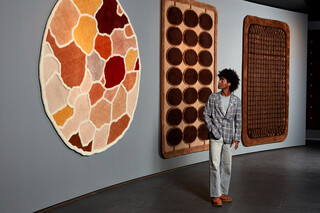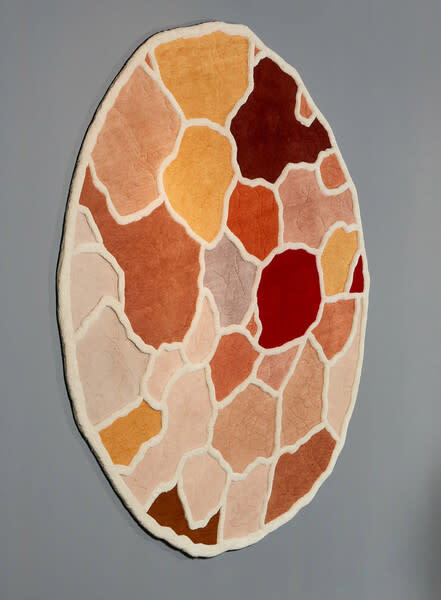The Milanese designer draws inspiration from his native Ethiopia to create sculptural wooden seating and hand-tufted rugs.


Abreham Brioschi doesn’t worry about imperfections. He’s much more focused on creating “products that have their own story,” says the 26-year-old designer, who graduated from the Nuova Accademia delle Belle Arti in 2022, the same year he showed his first three-piece collection at Milan Design Week. The guiding principle of his work is translating traditional forms and concepts from his native Ethiopia into functional furniture. “African design is extremely attentive to details and materials, to waste and functionality,” Brioschi says. His first and second collections feature sculptural wooden seating, such as the Lefleté chairwith its crescent-shaped platform, which references headrests used for centuries in Ethiopia and other parts of East Africa to protect elaborate hairstyles during sleep.
“Wood was the first material I experimented with, both because I’ve been passionate about it since I was little and because it’s the most used material in African design,” says Brioschi. While wood has played a central role in his previous collections, a recent project with Italian carpet company Nodus, which debuted at this year’s Milan Design Week, led him to branch out.
The new collection has three hand-tufted wool rug designs. There are the rectangular Scarification Mursi And Surinamese rugs with woven patterns in deep brown, beige and beige tones that mimic the markings on the skin made during scarification processes. (The designer’s debut included a wooden chair with a texture that also references scarification.) The third rug from the collaboration, Dancaliarefers to what Brioschi calls “the most visually striking place in Ethiopia”: the Danakil Depression, known for its sulfurous hot springs and salt flats. The circular shape of the carpet is composed of amorphous sections in deep browns, beiges, pale pinks, burnt reds and ochres that “represent the salt channels that shape the landscape,” Brioschi says; white outlines represent the salt. The palette may not be “completely faithful to the colors of the Danakil, but I tried to find and explore the most suitable tones for a more elegant and modern context,” he says.
In the future, Brioschi wants to tackle new forms and incorporate new materials into projects, including Italian marble and Murano glass, and not just because they are “always available in Italy,” he says. “For me it is very important to combine my African roots with Italian ones.”
You can learn more about Abreham Brioschi by visiting the studios website or on Instagram.
Top photo courtesy of Abreham Brioschi
Watch Dwell 24! from 2024
—
Return to the homepage of the September/October 2024 issue








